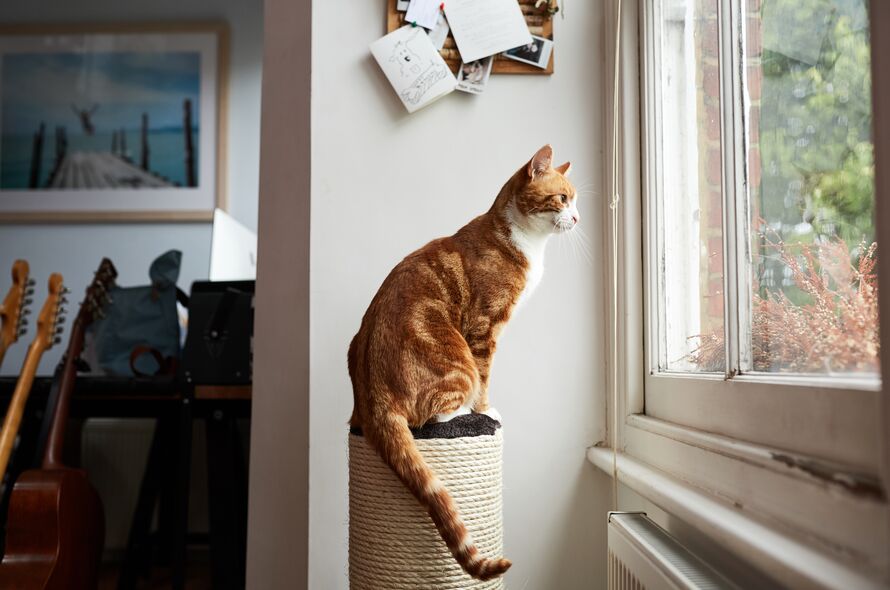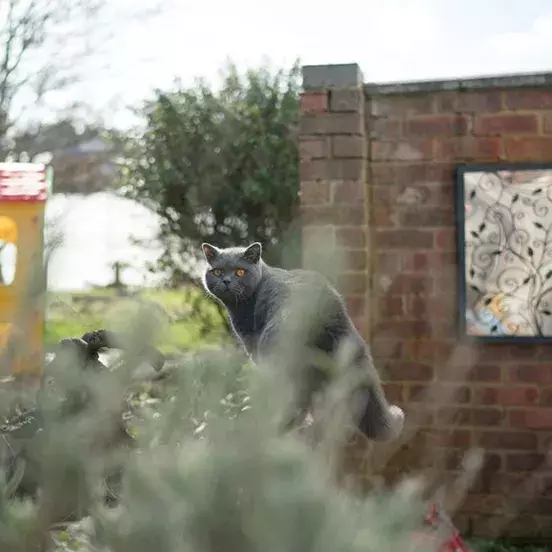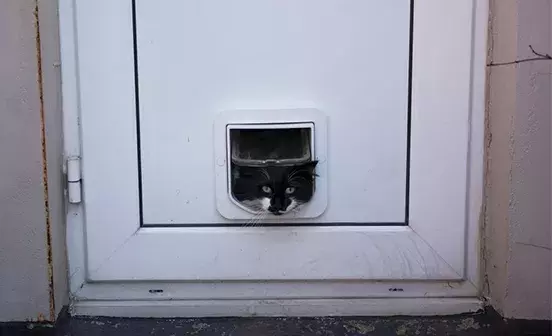Cats are territorial creatures, and many will fight to defend an area that they consider to be their own. For your cat, this could be part or all of your garden or outside space, or sometimes further afield.

Cats communicate with each other via scent that they leave on objects, so they can make their presence felt without encountering other cats directly. Most cats try to avoid fighting at all costs as it is not a good strategy for their survival, but sometimes a situation will escalate.
My cat’s been in a fight – what should I do?
If your cat has just been in a fight it is best to confine them indoors but not to give them too much immediate hands-on attention – cats can have a lot of excess energy when they have just been fighting, so they are best left alone for a while to calm down.
Superficial cuts and scratches are common fight injuries and you should be able to see these quite easily. Keep a close eye out for bite wounds as these are often difficult to detect and can heal over quite quickly, trapping bacteria inside. If your cat hides, or seems listless, withdrawn or lame after a fight then you should consult your vet.
My cat keeps fighting with other cats in the area – how can I stop my cat fighting?
In general male cats, particularly if they are not neutered, tend to roam further and are more likely to fight but this is not a hard and fast rule. Many cats are very tolerant about the presence of others on their ‘patch’, but some can be true to their origins as a solitary, territorial species and are more willing to fight.
However, two cats may fight because they’ve fought before in a previous situation, or they feel more secure in their own territory and are keen to defend it.
If your cat is fighting other cats, you could consider securing your garden or outside space with a commercially available system that can be installed to keep your own cat in and other strange cats out. In theory this would immediately stop the fighting but if your cat is used to roaming beyond your boundaries or has been travelling further to acquire their own territory elsewhere, this could be distressing for them.
If you have noticed that your cat is staying indoors more often or remaining within the garden, the option of securing it would probably work well.
How do I find out whether my cat is starting the fights or is a victim?
It’s often difficult, when your cat has been fighting, to establish whether this is with one or more cats and whether your cat is the victim or the one to initiate it. Vets will often say that the location of a cat bite wound is a good indicator of whether the fight was won or lost, i.e. if the wound is on the tail or hind quarters the injured cat was probably trying to escape and if the wound is on the head then the cat likely wasn’t backing down.
You might want to do some detective work; there may be an unowned tom cat in the vicinity, or you may be living in an area where the population of cats is very high, and each cat is struggling to establish their own territory.
You can try speaking to your cat-owning neighbours to help get a better idea of what the local cat population is and where they live. Someone may have seen a particular cat, potentially even yours, in a fight and might be able to give you some more details.
What can I do if I find out which local cat is responsible for fighting with my cat?
If you get some eyewitness evidence, you may establish at least one cat that yours is fighting with. In a territory that is shared by lots of cats a certain amount of fighting is almost inevitable but if this is something that is happening on a very regular basis, for example two or three times a week, you may need to take further steps.
Firstly, you need to ensure that the cat they are fighting with has an owner. If there is no evidence of an owner and you think they might be an un-neutered stray you may be able to request assistance from a cat charity to humanely trap the cat, have them neutered (if necessary) and found an appropriate home. They will be able to scan the cat, once caught, to ensure there is no microchip with details of ownership.
If the cat has an owner you could try discussing the problem with them. If the owner is open to solving the problem you will be relying on their goodwill, as they don’t have a legal obligation to do anything specific. You could ask them to keep their cat indoors at night if the fighting is occurring then, or during the day if their cat prefers to go out at night. Feeding the cat a treat may be sufficient incentive for them to come in at the required time.
You might also benefit from installing a microchip-operated cat flap which allows only your cat access into your home. It does this by reading their unique microchip identification that is hidden under the skin on the back of their neck.
Many cats who are victims of persistent attacks become reluctant to go outside so it is important to make your cat feel as secure as possible indoors by providing an indoor litter tray and giving them plenty of places to rest and hide at home. A microchip-operated cat flap will ensure that the other cat(s) will not gain access to your home.
It may be helpful, if the fighting is taking place in your garden or outside space, to make the route in as difficult as possible for the other cat to gain access. For example, see if you can establish any well-trodden paths that the other cat has used which you may be able to block off, such as gaps under fences and gates.
Most healthy cats can scale a six-foot fence with ease, so the cat may just jump over the fence or gate but making the process more complicated may be sufficient to redirect some cats.
How long do fights last between cats?
It is fairly rare for two cats to fight regularly on a long-term basis as most will learn to predict the other’s habits and avoid areas where they are likely to be. Cat fights are essentially won or lost on the day and only the minority of disputes remain unsettled. If the issue is left unresolved then fighting may occur from time to time.
Am I liable for the veterinary costs if my cat injures someone else’s cat?
While disputes between cats are accepted by most owners as inevitable, sometimes things can get out of hand, especially in those cases where injuries are inflicted regularly by one particularly assertive cat.
In severe situations, the cat’s behaviour can be considered a ‘nuisance’ in legal terms, particularly if it causes damage to property, or people are getting injured. In these cases the local council could serve an abatement notice, forcing the owner to take steps to prevent the nuisance that is being caused by their cat. Failure to comply with this notice is a criminal offence, but this is something that very rarely results in prosecution.
In these situations, rehoming particularly aggressive cats to a different area with a low cat population is often a solution that works well for both the community and the cat(s) in question.



